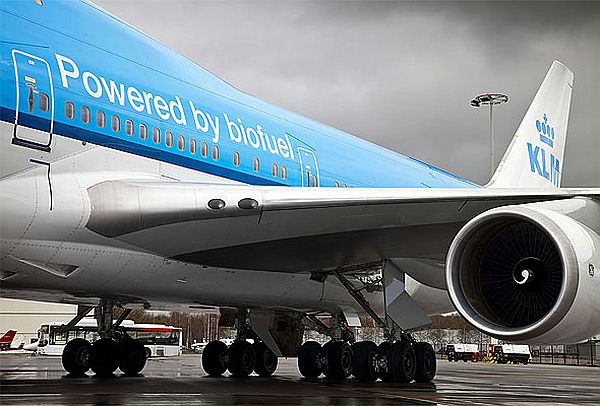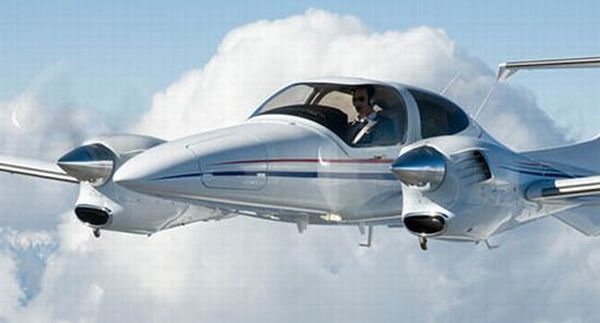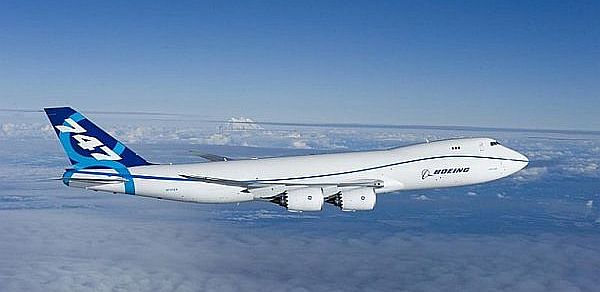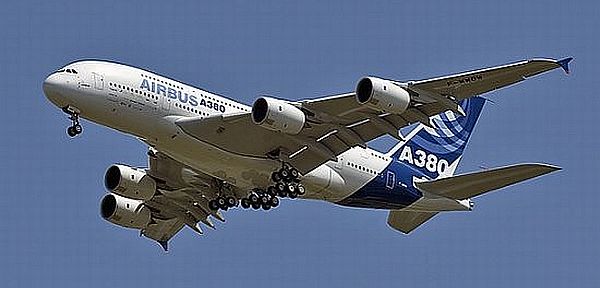
What’s happening right now
July 2011 became an important landmark for the biofuels industry when the American Society for Testing and Materials (ASTM) issued approval for blending of biofuels with jet fuel for commercial aircraft. The approval permits blending of up to 50 percent biofuel with jet fuel and lays down the detailed specifications for such blending. This approval came after several years of testing and evaluation by airplane and engine manufacturers, oil companies and the airlines. The welcome advantage is that the blended fuel could be used without any change to the engine. Many airlines have now started regular commercial flights using blended biofuels.
Aircraft use only some 10 percent of all liquid fuels used in transportation and the emissions from aircraft engines are only 2 percent of the total global emissions. The reason for trying out alternative fuels for this demanding application has more to do with the concern that there is the real risk of petroleum supplies getting depleted in the next 30 to 50 years. Any airplane has a service life of about 40 years and unless the necessary operations and maintenance experience is built up, if a petroleum supply crunch does happen, air travel could get crippled. The air travel industry continues to grow and the total passenger traffic is projected to grow 6-fold by 2030 due to demand growth from China, India and the other developing economies.
The jet fuel industry is already a very big business at around $140 billion a year for some 200 million tons used by commercial aircraft. Aircraft refueling can be closely monitored as some 1600 airports around the world account for over 95 percent of fuel used by commercial aircraft. It is therefore possible to continuously check and monitor fuel quality, correlate with engine performance and make any improvements that are needed. This is compared to the over 160,000 gasoline outlets in the mainland US alone for refueling cars and trucks.
The current cost of bio-fuels in much higher, up to 3 times the cost of jet fuel. The airlines are lobbying for subsidies to offset the higher cost. Biofuel prices are expected to drop with the use of newer sources for making biofuels such as algae, used cooking oils, municipal waste and non-food plants and plant wastes. The European Union has permitted airlines to trade the carbon credits they earn from using biofuels, to partly offset the higher fuel cost.
With the two major passenger aircraft companies Boeing and Airbus active in the biofuel arena, the air transportation industry could emerge as an important user of biofuels.
Trends
1. EADS

The European Aeronautic, Defence and Space Company (EADS) is the parent group of Airbus and takes the lead in the design and development of new technologies. EADS has test flown a twin-propeller DA 42 aircraft entirely on biofuel, not blended with jet fuel. This test flight was at the Berlin Airshow in June 2010. The test demonstrated that biofuel, at some future point, could even fully replace petroleum fuel for aircraft operation.
Though the algae based biofuel used in this test is several times more expensive than jet fuel at present, it completely eliminates Sulfur Dioxide (SOx) emissions and reduces Nitrous Oxide (NOx) emissions by about 40 percent. The fuel consumption is also marginally lower than with jet fuel. EADS reported that only minor adjustments were needed to the aircraft engine to burn the biofuel.
2. Boeing 747-8 Freighter

Boeing has flown a 747- 8 Freighter plane from Seattle to Paris for the Paris Airshow in June 2011, using blended biofuel for all its four engines. The blend used was 15 percent Camelina based biofuel with 85 percent jet fuel. This blend has previously been extensively tested by the US Navy and the US Air force on Boeing planes flown by them with the target of changing to a 50:50 blend in the next few years.
Camelina is a plant that grows in degraded agricultural land and needs very little water. The seeds of this plant have over 37 percent oil content and is therefore a good source of biofuels. After de-seeding, the plant can be used as animal feed.
Boeing expects better mileage using this blend, along with reduced engine noise and reduced emissions. Proving this blend on the Boeing 747 will accelerate acceptance of biofuels for large capacity passenger aircraft. This plane was fitted with GE engines.
3. Airbus 380

The Airbus A380 is the world’s biggest passenger aircraft . The double decker plane can carry between 500 and 800 people depending on cabin configuration. The A380 plane was test flown between two Airbus facilities in Filton in the UK and Toulose in France in February 2008 with one of the four engines using a 60:40 blend of fuel. The 40 percent blend was of GTL (for Gas to Liquid) fuel. The plane had Rolls Royce engines.
GTL is a process to convert any gas to a liquid fuel. Besides natural gas, the GTL process can convert methane gas from municipal landfills or other biomass sources into liquid fuel. The GTL blend used in the test flight does not reduce CO2 emissions but eliminates Sulfur Dioxide.
The test flight of the largest passenger aircraft is an important step in acceptance of biofuels for commercial aircraft.
The concept
Biofuels represent a renewable energy source. The so called first generation biofuels were made from corn in Brazil and the US and caused a sharp rise in food prices around the world with the food crop being diverted fuel production. The same effect was seen in Malaysia and Indonesia where edible palm oil was diverted to bio-diesel blending.
The second generation biofuels depend on non-food crops like Jatropha and Camelina which also grow on degraded land. The third generation biofuels are based on algae which yield 30 percent higher biofuels per acre. Now, non-agricultural sources for biofuel are emerging such as used cooking oil, municipal waste and blast furnace gases.
The emergence of biofuels will slow the growth in use of petroleum fuels and help extend their availability.
The advantages
Biofuels, irrespective of their source, reduce CO2 and NOx emissions and eliminate SOx emissions. The increase in use of blended fuels will help bring more researchers into this field and that would help advance the technology.
The operational experience with biofuel use in the demanding aircraft engines application would also facilitate extension of biofuels use to land based transport and other liquid fuel applications.
The impact
Besides the conservation of petroleum based fuels and reduction of emissions, biofuels should help advance the economies of the poorer parts of the world. Countries in the Asian, African and Latin American continents have the landmass and the sunshine to grow many of the crops needed for biofuel production. With fuel prices being consistently higher than food prices, these crops would help bring a measure of prosperity to the farmers in these countries. The transport logistics would also dictate that the the crops grown in these region would be processed into fuel locally, with only the high value end products being shipped out to the advanced economies for blending.




